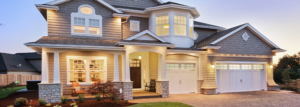What You Need To Know About Smoke Alarms
Oct. 8 marks the start of National Fire Prevention Week, so, now is a great time to talk about smoke detectors, those devices that have warned people for years that fire might be breaking out in our homes.
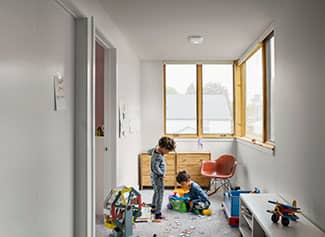 Recently, those alarms have been getting “smarter,” just like many devices installed around homes, including refrigerators, ovens, garage doors, thermostats and more. When smoke or flames set them off, these newest devices don’t just sound an alarm in the house, they send a push message to your smartphone via Wi-Fi so that you can call the fire department if you’re away from home.
Recently, those alarms have been getting “smarter,” just like many devices installed around homes, including refrigerators, ovens, garage doors, thermostats and more. When smoke or flames set them off, these newest devices don’t just sound an alarm in the house, they send a push message to your smartphone via Wi-Fi so that you can call the fire department if you’re away from home.
You should install an app on your phone, of course, but these smart detectors can warn you as well when the batteries are getting low in your alarms and can also turn off false alarms.
Among the tech-savvy alarm brands are Nest Protect, Kidde, Leeo, First Alert and Halo. Many have built-in carbon monoxide alarms as well. One manufacturer, Roost, also has a smart battery that you can install in a traditional smoke detector to notify you via your cellphone if your alarm is wearing down.
Some smart detectors also have hardwired versions – the kind of alarm system that sounds simultaneously on all levels of your home when one unit detects smoke or flames.
One big drawback is the cost. You can pay $100 or more for each separate smart detector and there are additional costs if you don’t install them yourself. Compare that to $20 or less for the old-fashioned, not-so-smart detector.
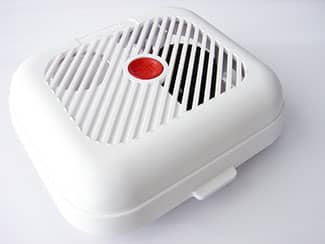
“Another downside of smart alarms is that you’re putting a lot of trust in the Internet,” said Jared Wright of Rosie on the House Certified Harmony Security. “When the Internet gets slow or your modem breaks down, you won’t get that notification.”
Traditional security systems send a message to a monitoring station using cellular connections not affected by the Internet. The monitoring station then calls the fire department.
Here is some basic advice from the National Fire Protection Association on smoke alarms and how to use them. The association says that about three out of five fire deaths happen in homes with no smoke alarms or that have smoke alarms that are not working.
1 | Location
You need smoke alarms in every bedroom and outside each sleeping area and on each level of the home. Keep smoke alarms away from the kitchen to reduce false alarms. Detectors should be at least 20 feet away from the stove.
2 | Installation
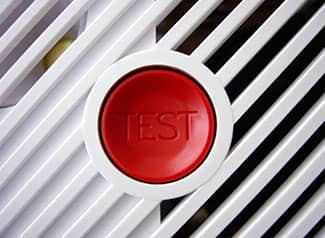
Installing an individual battery-operated alarm is relatively simple. It’s just a process of putting screws into a wall or ceiling. An alarm should either be installed on the ceiling 4 inches away from the wall or on the wall from four to 12 inches from the ceiling. If you’re installing an interconnected system of alarms, you probably need the help of an electrician. You always want to follow the manufacturer’s directions carefully no matter what the type of alarm you have.
3 | Maintenance
Test all alarms once a month by pressing the test button to be sure the alarm is working. Replace all smoke alarms when they are 10 years old. Change batteries regularly –every New Year’s Day, for example.
4 | Different kinds of alarms
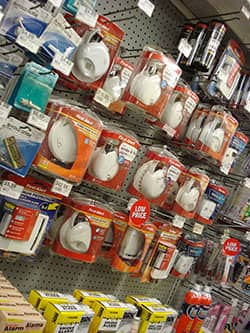
Two types of sensors are used to set off alarms in smoke detectors. Alarms with ionization sensors are more sensitive to flaming fires while photoelectric alarms are quicker to warn about smoldering, smoky fires. It’s best to use some of each type of alarm in your home. That doesn’t mean installing two different detectors next to each other. Just use both kinds somewhere – one type near the fireplace perhaps and another kind in a bedroom. There are also some combination alarms that include both kinds of sensors in a single device.
5 | False alarms
Ionization sensor smoke alarms are more susceptible to false alarms, but both types are susceptible to going off due to cooking fumes or due to steam from a hot shower. In the past 10 years, manufacturers have been working on stopping false alarms from occurring.
6 | Hearing problems
Special alarms with strobe lights and bed shakers are available for the hearing disabled.
7 | Get connected
Interconnected smoke alarms provide early warning of fires that are far away in a larger home or on the other side of a door or wall that blocks sounds.
A Final Note
When the alarm sounds, be sure you know what you’ll do next. Plan a second way out from every room in your home and practice that escape plan with every member of your family.
###
PHOTO CREDITS
RELATED CONTENT














